‘Nature & Culture – Sensory Narratives and Frictional Relationships’ | Antwerp, Belgium & Vilnius, Lithuania
EAS interviews Lithuanian-born, Belgium-based artist Paulius Šliaupa about his recent creative endeavors, residencies and exhibition experiences. Paulius generously shares his aims, research explorations, influences and thought-provoking work, along with his concerns about environmental shifts and their accumulating impact on culture and the human psyche.
_______________________________________________________________________
ARTIST STATEMENT
Every winter there is less and less snow in the Baltics. Denial of the changing environment indirectly affects individual lives by gradual distancing from nature, alienation, but craving for intimacy and understanding at the same time. The changes are happening on scales that are beyond human reach and maybe they cannot be explained by science theories and words. Coming from a family of geologists, I am interested in these frictional relationships between culture and nature, the interaction of natural and artificial ambiances and lights that affect our daily lives. Having spent my childhood between the laptop screen and fishing on the riverside, I constantly sense that experiences are fading away. I wish my art to impact the viewer’s psychology, to influence one‘s way of being present.
From video installations and experimental movies for the cinema to object-like paintings, I work with associations to create a journey through different spaces and sensations. My works explore ambiance, light and how they affect our daily lives. Although there may not always be material similarities between the different projects, they are linked by a sensual approach that induces a specific mood, a recurring flow of poetic painterly images, atmospheric sounds and a strong sense of tactility. Often, my videos arouse the sensation of being caught between desire and regret. Most projects consist of multiple works, grouped around specific themes such as life near the sea or the interaction between the human world and nature. Often during my projects, new ideas arise and lead to the next bodies of work, which I construct from my extensive database of sounds and images that I record every day.
_______________________________________________________________________
INTERVIEW
EAS: Emergent Art Space (EAS) first came to know you and your work through the Bookmark Project, a four-week online workshop led by Einat Mogland from Tel Aviv that culminated in the Rhythm of the Blue Marble exhibition posted on the EAS website. The project engaged 20 artists from around the world online during the pandemic, where you all shared art, ideas, and experiences. Tell us about your involvement and its impact.
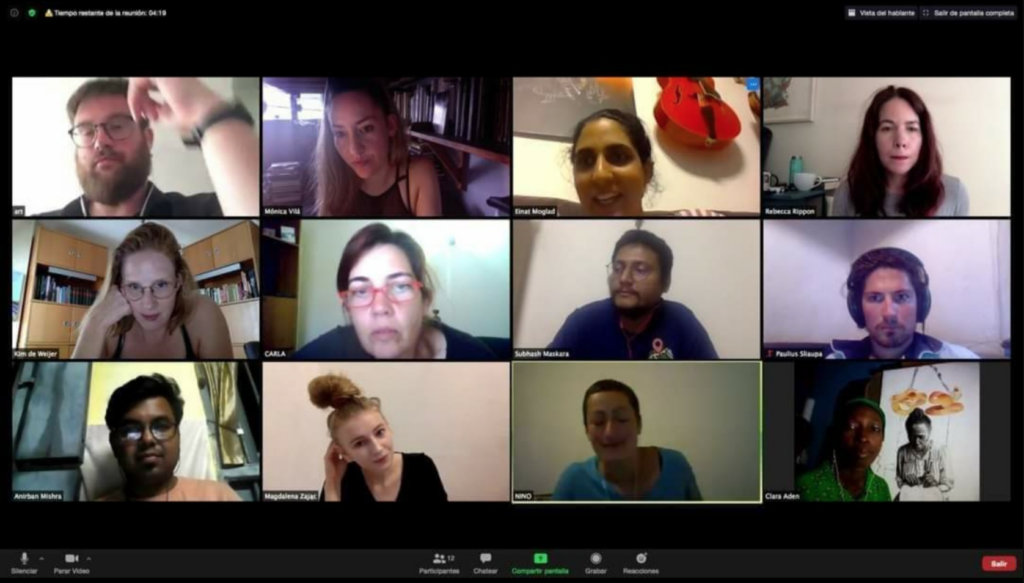
PŠ: I joined this workshop because the feeling of being in a community inspires me to discover new approaches and to learn from other artists. They [the participating artists] expanded my world and allowed me to understand how differently people feel the world. Also, I was interested in going back to the basics of creating art to rediscover the connection with one’s way of being.
I enjoyed the ZOOM meetings the most, and specifically an exercise where we had to watch each other's eyes, to feel the other person situated thousands of kilometers away. That was a new experience for me because usually we take up the online meeting space with conversations and these subtle things disappear in the information flow. My biggest supporter was Einat, she guided me through the whole process and was very inspiring.

Also, I began a deep dialogue with Monica Vilá [one of the participating artists]. I became engaged with the idea of ‘punctum’¹; I rediscovered this theory again and I made a few new artworks. As the punctum approach opens up things from another angle, it encouraged me to reflect on what I am interested in and to try to push the artworks further. More specifically it encouraged me to try to finish the night videos that I am currently working on.
EAS: Recently you have been very active with residencies and exhibitions. Please tell us more about the residencies at HISK (Higher Institute for Fine Arts) Post Graduate Program and Cour des Arts in Saint-Rémy-de-Provence. What are you learning? How are these experiences influencing and advancing your work?
PŠ: The past two years were indeed the most colorful in my artistic life so far. I participated in multiple exhibitions and film festivals, which I feel is an outcome of the HISK residency. This is a two-year postgraduate programme where art professionals from Belgium and abroad are invited to make individual studio visits and have in-depth discussions with each of the resident artists. Visiting lecturer sessions are organised throughout the entire year. Each session will host about five lecturers who are invited for three consecutive days. After the lectures, the candidate laureates are provided with individual confidential written reports. The meetings with various professionals enabled me to develop a clear artistic language and to verbalize ideas that interest me.
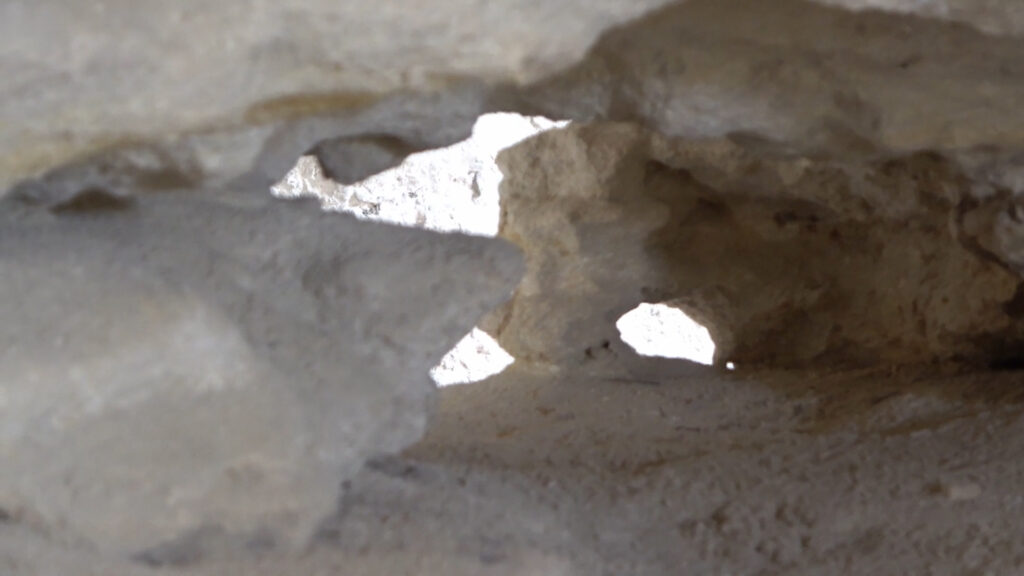
The residency Cour des Arts in Provence was a very new, intense, and unexpected experience that I had this past summer. Eight artists from different countries gathered in Lycee Agricultural Education (Lycee Enseignement Agricole) which became our temporary home for a month to paint the light of Saint-Rémy-de-Provence. Each day the volunteers from the city would bring us food and drinks and sometimes invite us to their dinner table. This welcoming gesture made us feel included in the local city life and allowed us to forget how coronavirus changed the habits of the world. The residency was meant for painters, and so each day we would paint various motifs surrounding us or coming from our experiences being there. I was exploring the environment very much, hiking, hitch-hiking, going on colorful trips alone and with others, resulting in a video called The Island where the abbey of Saint-Roman, built in the 5th century and located inside the caves, reminded me of the process of creation.
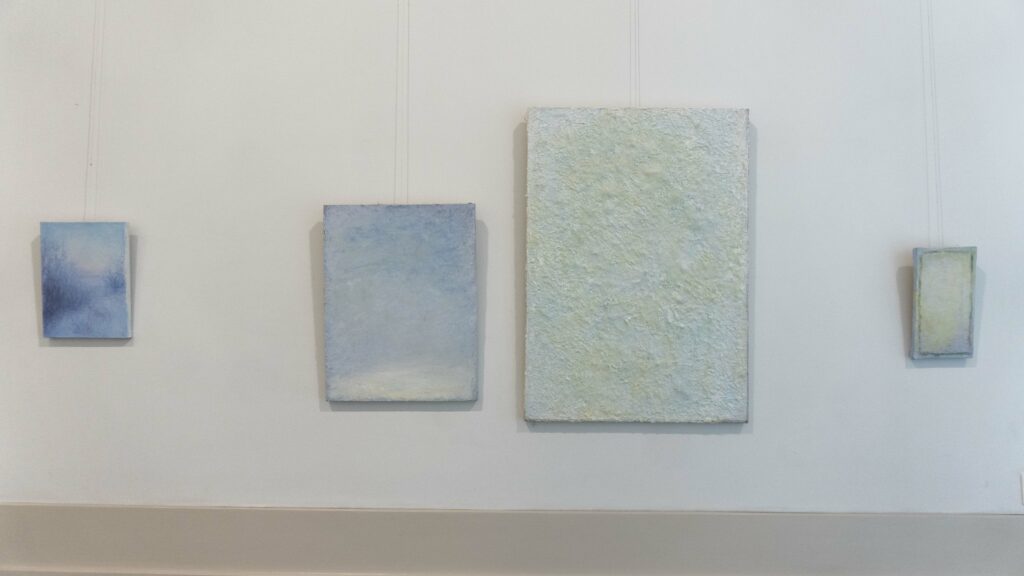
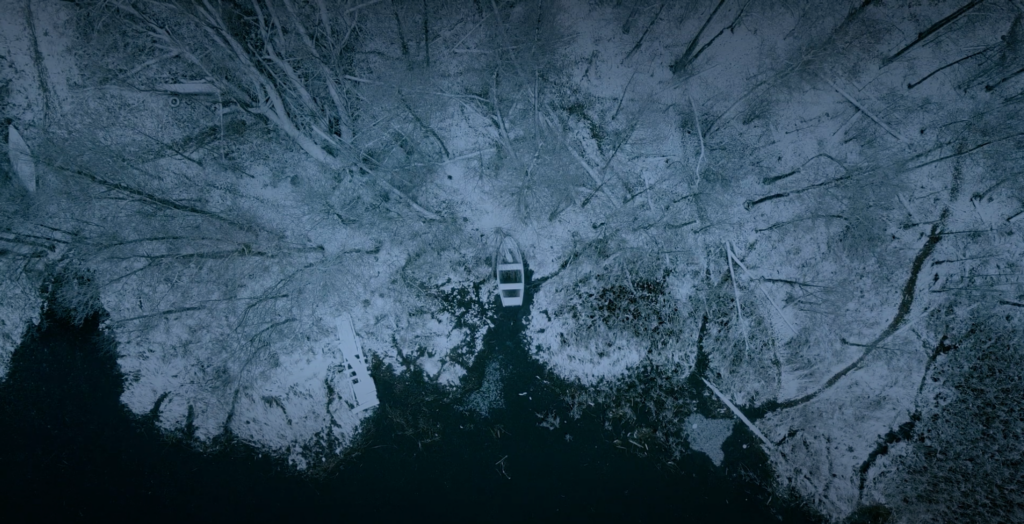
EAS: I appreciate how your works really envelop the viewer in the spaces that you record, almost like a meditation, with intense yet subtle imprints.
PŠ: I have been developing The Monk for the past year as my HISK graduation project. It evokes, in a poetic way, man’s changing relationship with nature, the consequences this has on people’s daily life and the feeling of loss and alienation this causes on a personal level. Referring to the painting of Caspar David Friedrich “The Monk by the Sea”, this work deals with contemporary sublime experiences. I am also fascinated by film makers such as Bela Tarr, Viktor Kossakovsky, Sarunas Bartas.
EAS: The way you describe your work calls to mind some works by Ana Mendieta. She, in a sense, became part of nature in the artworks she created. What influences do you draw on and who do you look to for inspiration?
PŠ: I like the works of Ana Mendieta indeed, but I discovered them not so long ago. I am really interested in the works of Nicolas Provost, the teachings of Eckart Tolle which remind the importance of the Now, the suspenseful books of Stephen King, and the freedom of imagination of Ray Bradbury and Aldous Huxley, in particular, “The Island”.
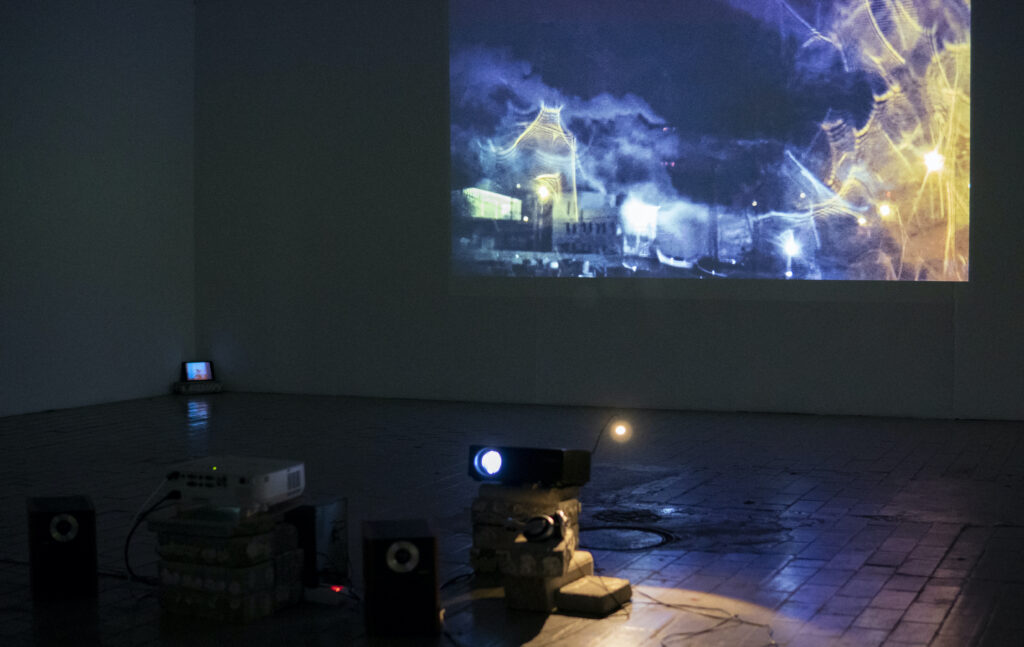
EAS: Tell us more about your inquiries into human relationships with nature, changing climates and environments, and how you are exploring these questions through your artwork. What are you discovering? Do you believe there is an important role or call to action for young emerging artists in addressing the environmental crises the world is facing?
PŠ: My research begins from atmospheres, images, and sounds which I document and later try to understand what they mean. I wander the outskirts of the cities, abandoned factories, and explore the cities in the night. I find millions of interesting fragments of human and nature formations mixing, that are all part of a bigger post-ecological attitude towards the world. I don’t judge my findings. I am fascinated by them and, in my works, I want to transmit this feeling because it leaves the freedom to form your own opinions and sense how everything is interconnected. I believe that every artist is free to work with his or her own interests and address the issues that are important in their personal and social worlds.
FOOTNOTE:
¹ Punctum: the literary theorist Rolan
__________________________________________________________________________________________
ABOUT THE ARTIST
 Paulius Šliaupa‘s (1990, Vilnius, Lithuania) works explore the relationship(s) between culture and nature; the interaction of ambience and light that affect our daily lives. From video installations and experimental movies for the cinema to objectlike paintings, his oeuvre encompasses a wide range of artistic media. By accumulating the flow of painterly images, atmospheric sounds, and poetic energy, he forms sensual narratives. His artistic research led him to explore the structures of poetic cinema, artist moving image, suspense, magic realism, and sci-fi literature. Most projects consist of multiple works, grouped around specific themes such as organic structures, rituals in nature; the flow of natural and artificial light; expeditions into the mystery of the night, absurdly seducing happenings.
Paulius Šliaupa‘s (1990, Vilnius, Lithuania) works explore the relationship(s) between culture and nature; the interaction of ambience and light that affect our daily lives. From video installations and experimental movies for the cinema to objectlike paintings, his oeuvre encompasses a wide range of artistic media. By accumulating the flow of painterly images, atmospheric sounds, and poetic energy, he forms sensual narratives. His artistic research led him to explore the structures of poetic cinema, artist moving image, suspense, magic realism, and sci-fi literature. Most projects consist of multiple works, grouped around specific themes such as organic structures, rituals in nature; the flow of natural and artificial light; expeditions into the mystery of the night, absurdly seducing happenings.
Paulius holds a BA in painting and an MFA in contemporary sculpture in Vilnius Academy of Arts, Vilnius, Lithuania, an MFA in media arts in KASK, Ghent, Belgium and he completed exchange programes of MFA painting in RUFA, Rome and MFA in Malmo Arts Academy, Sweden. In 2021 he participated in the residency La Cour des Arts in Saint-Rémy-de-Provence, France. Selected exhibitions would include personal exhibition “Dès Vu“ (2019), Meno Niša, Vilnius, Lithuania; the group exhibitions Sonsbeek´s Conjunctions programme, Arnhem, Netherlands (2021), LAHTI FRINGE FESTIVAL, Lahti, Finland (2021), “The Sun Song Imagined“ Museum DE MINDERE, Sint-Truiden, Belgium, “New Songs for Old Cities“, Netwerk, Aalst, Belgium (2021), “BEESTIG?“ Stadsfestival Damme, Damme, Belgium (2020-2021) and “The upper hand“, IKOB, Eupen, Belgium (2020). Šliaupa is part of the HISK post-graduate programme 2020 & 2021 Ghent, Belgium.